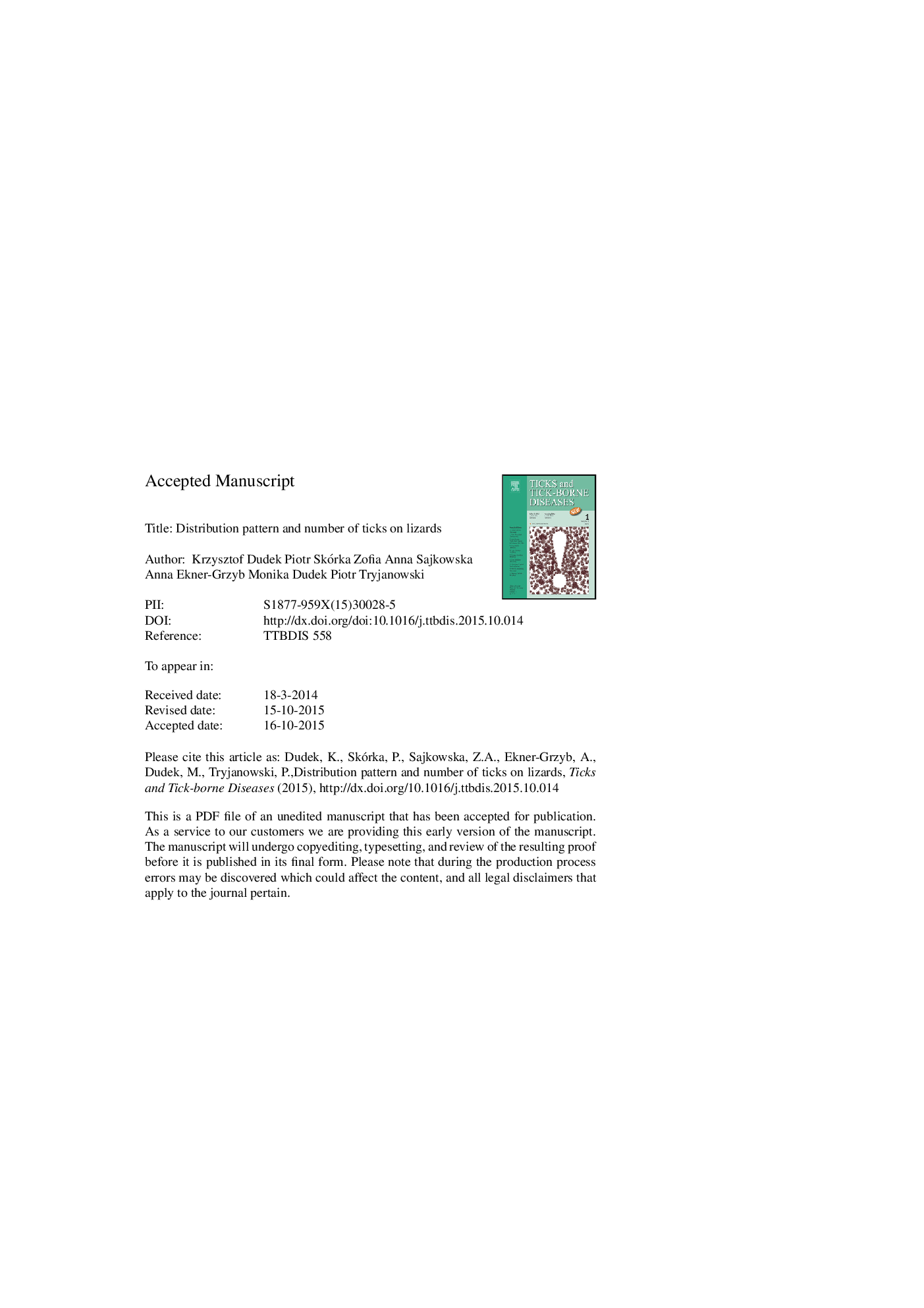| کد مقاله | کد نشریه | سال انتشار | مقاله انگلیسی | نسخه تمام متن |
|---|---|---|---|---|
| 5807041 | 1113102 | 2016 | 20 صفحه PDF | دانلود رایگان |
عنوان انگلیسی مقاله ISI
Distribution pattern and number of ticks on lizards
ترجمه فارسی عنوان
الگوی توزیع و تعداد کنه ها بر روی مارمولک ها
دانلود مقاله + سفارش ترجمه
دانلود مقاله ISI انگلیسی
رایگان برای ایرانیان
موضوعات مرتبط
علوم زیستی و بیوفناوری
علوم کشاورزی و بیولوژیک
علوم دامی و جانورشناسی
چکیده انگلیسی
The success of ectoparasites depends primarily on the site of attachment and body condition of their hosts. Ticks usually tend to aggregate on vertebrate hosts in specific areas, but the distribution pattern may depend on host body size and condition, sex, life stage or skin morphology. Here, we studied the distribution of ticks on lizards and tested the following hypothesis: occurrence or high abundance of ticks is confined with body parts with smaller scales and larger interscalar length because such sites should provide ticks with superior attachment conditions. This study was performed in field conditions in central Poland in 2008-2011. In total, 500 lizards (Lacerta agilis) were caught and 839 ticks (Ixodes ricinus, larvae and nymphs) were collected from them. Using generalised linear mixed models, we found that the ticks were most abundant on forelimbs and their axillae, with 90% of ticks attached there. This part of the lizard body and the region behind the hindlimb were covered by the smallest scales with relatively wide gaps between them. This does not fully support our hypothesis that ticks prefer locations with easy access to skin between scales, because it does not explain why so few ticks were in the hindlimb area. We found that the abundance of ticks was positively correlated with lizard body size index (snout-vent length). Tick abundance was also higher in male and mature lizards than in female and young individuals. Autotomy had no effect on tick abundance. We found no correlation between tick size and lizard morphology, sex, autotomy and body size index. The probability of occurrence of dead ticks was positively linked with the total number of ticks on the lizard but there was no relationship between dead tick presence and lizard size, sex or age. Thus lizard body size and sex are the major factors affecting the abundance of ticks, and these parasites are distributed nearly exclusively on the host's forelimbs and their axillae.
ناشر
Database: Elsevier - ScienceDirect (ساینس دایرکت)
Journal: Ticks and Tick-borne Diseases - Volume 7, Issue 1, February 2016, Pages 172-179
Journal: Ticks and Tick-borne Diseases - Volume 7, Issue 1, February 2016, Pages 172-179
نویسندگان
Krzysztof Dudek, Piotr Skórka, Zofia Anna Sajkowska, Anna Ekner-Grzyb, Monika Dudek, Piotr Tryjanowski,
